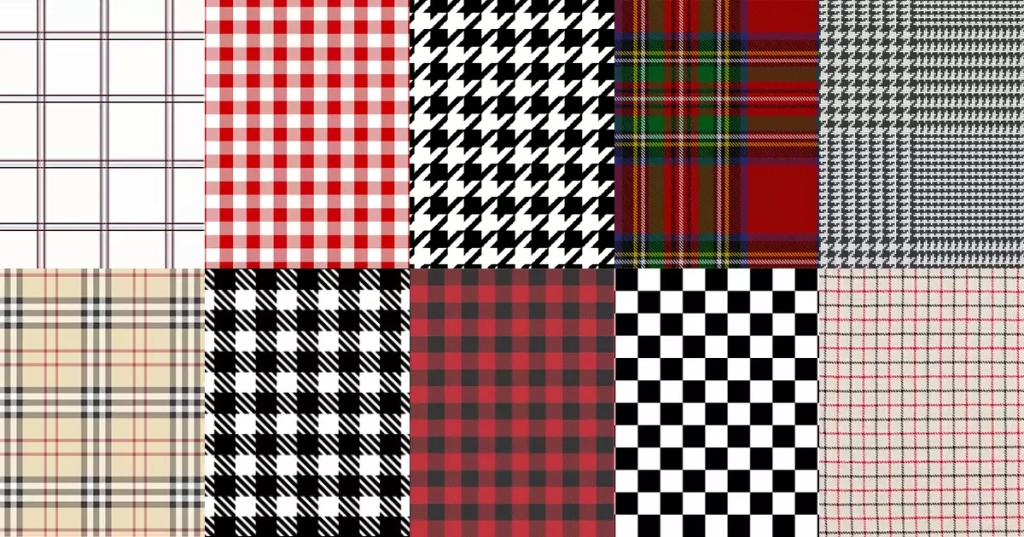
Introduction:
Plaid, a fabric pattern characterized by its crisscrossed horizontal and vertical bands in multiple colors, has transcended its humble origins to become a timeless and iconic element in the world of fashion. This versatile pattern has a rich history, boasts an array of styles, and has left an indelible mark on the runway and in pop culture. Let’s delve into the fascinating world of plaid, exploring its origins, the diverse types available, and some unforgettable moments in fashion history.
History:
The roots of plaid trace back to ancient times, with evidence suggesting its existence in Celtic cultures as early as the 6th century. Originally, plaid referred to the traditional Scottish tartan patterns, each associated with specific clans or regions. Over time, plaid evolved beyond Scotland, becoming synonymous with various cultures and adapting to changing fashion trends.
Types of Plaid:
Plaid comes in a myriad of styles, each with its unique charm. Some of the most notable types include:

- Tartan: The quintessential Scottish pattern, tartan plaid is characterized by its distinct horizontal and vertical bands, often in vibrant colors. Each tartan is associated with a particular clan or region, adding a personalized touch to this classic pattern.
- Madras: Originating from India, Madras plaid is a lightweight fabric featuring bright, bold colors and a patchwork design. It gained popularity in the preppy fashion scene in the mid-20th century, becoming a staple in warm-weather wardrobes.
- Buffalo Check: Known for its larger, simplified pattern of equal-sized squares, buffalo check plaid typically features two contrasting colors. This bold and rustic pattern has found a place in both casual and outdoor fashion.
- Glen Plaid: Also known as Prince of Wales check, Glen plaid is characterized by small, tightly packed checks. It often appears in suits, adding a touch of sophistication and elegance to men’s and women’s fashion.
- Houndstooth Plaid: Nestled within the vast landscape of plaid patterns, houndstooth emerges as a distinctive and sophisticated weave. This classic pattern, characterized by its broken checks or abstract four-pointed shapes, exudes a timeless elegance that seamlessly blends tradition with modernity.
Iconic Moments in Fashion:
Plaid has had its share of iconic moments in the world of fashion, cementing its status as a timeless and versatile pattern:
- 1960s Mod Fashion: The swinging ’60s embraced bold and vibrant plaids in mini skirts and dresses. Designers like Mary Quant and Andre Courrèges played a pivotal role in popularizing plaid as a symbol of the youthful and rebellious spirit of the era.
- Grunge Era: In the 1990s, plaid became synonymous with the grunge movement, thanks in part to bands like Nirvana and fashion icons like Kurt Cobain. Flannel shirts in various plaid patterns became a defining element of the grunge aesthetic.
- Clueless Chic: The 1995 film “Clueless” brought plaid into the mainstream fashion consciousness. Cher Horowitz, played by Alicia Silverstone, became a style icon, showcasing a range of plaid outfits that are still influential today.

Conclusion
From its origins in Scottish clans to gracing the runways of high fashion, plaid has proven its enduring appeal. Whether in the form of a cozy flannel shirt, a sophisticated tartan suit, or a trendy mini skirt, plaid continues to capture the imagination of fashion enthusiasts worldwide. I adore pairing plaid with florals and prints whenever I can. I am mad for plaid and its ability to adapt to diverse styles and eras speaks to its timeless charm, making plaid an indispensable and iconic pattern in the tapestry of fashion history.
You must be logged in to post a comment.